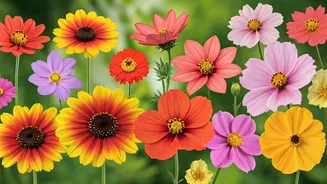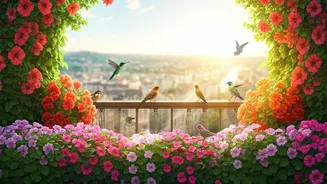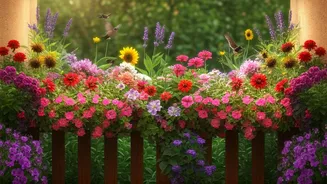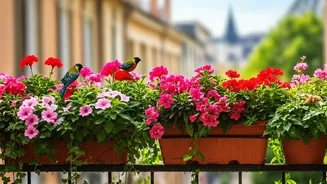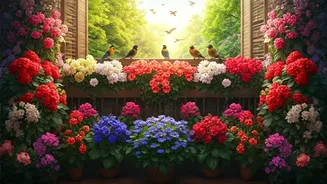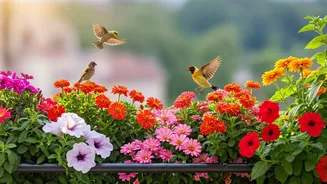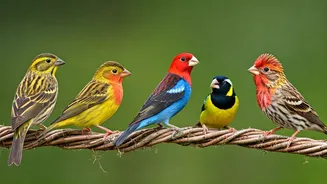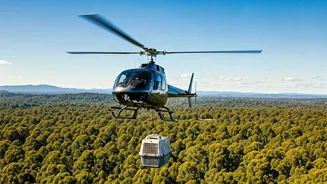Petunias: Colorful Welcome
Petunias are well-known for their vivid colors and ability to bloom prolifically, drawing in hummingbirds. They are a favored choice for balcony gardens
because they are relatively easy to maintain. These flowers thrive in direct sunlight and need regular watering, making them perfect for warm climates. The bright, trumpet-shaped flowers come in a rainbow of shades, offering a visual feast and acting like a beacon for various bird species. Their extended blooming season from spring to fall ensures a consistent food source for birds, and the plant's cascading growth habit is perfect for hanging baskets or containers, adding to the garden’s visual appeal and making the balcony a delightful spot.
Marigolds: Sunny Charms
Marigolds are famous for their vibrant orange and yellow hues, which naturally attracts birds. They’re also exceptionally hardy, flourishing in diverse conditions, which makes them ideal for various Indian climates. Marigolds are not only visually appealing but also offer practical benefits, as they have natural insect-repelling properties that can help protect other plants in your garden. Birds often visit marigolds for seeds and to hunt for insects attracted to the plants. Regular deadheading encourages more blooms, ensuring the balcony consistently looks attractive. Furthermore, their bright appearance can add cheerfulness, making your balcony a welcoming place for both birds and humans.
Sunflowers: Golden Giants
Sunflowers, with their towering heights and cheerful faces, are a fantastic addition to attract birds. These plants are easy to grow from seeds, and their large heads are brimming with nutritious seeds. As the sunflower matures, the seeds ripen and provide a bountiful feast for various bird species like finches, sparrows, and other small birds. Planting sunflowers offers a seasonal experience, as you can watch them grow from small seedlings to full-sized plants, and then enjoy watching the birds feed off the seeds. Ensure they are placed in a sunny spot, providing support if needed, as they can grow quite tall. They add a natural, wild touch to your balcony.
Zinnias: Bursting Hues
Zinnias offer a colorful spectacle in the garden, with various vibrant blooms that draw in butterflies, bees, and birds. These flowers have a long blooming season, lasting from summer until the first frost. Zinnias thrive in sunlight and well-draining soil, making them suitable for most balcony gardens. The bright, multi-colored petals of zinnias are irresistible to birds, providing a source of nectar and attracting insects. Zinnias are easy to grow, needing little care besides regular watering. Choose a variety of colors to create a visually appealing display, making your balcony a colorful haven for birds. Deadheading will help maintain their flowering to attract more birds.
Nasturtiums: Edible Delights
Nasturtiums are unique because their leaves and flowers are edible, adding a bit of flavor and a touch of color to your balcony garden. These plants are easy to grow, thriving in various conditions and even tolerating poor soil. The bright, cheerful flowers and round leaves are attractive to hummingbirds and other small bird species, while also attracting pollinators. The peppery taste of the flowers and leaves adds a special touch if you plan to use them in salads or other dishes. They are adaptable plants and can be grown in pots or hanging baskets, offering a dual appeal for both birds and humans. They're also beneficial because they help repel pests naturally.
Cosmos: Delicate Elegance
Cosmos flowers are known for their delicate, daisy-like appearance and their ability to attract various birds and butterflies. These plants have a graceful form and come in various colors, from pinks and whites to vibrant oranges and reds. Cosmos are easy to cultivate, making them ideal for balcony gardens, as they need sunlight and well-draining soil. Their seeds are a favorite food source for birds, and the flowers provide nectar for other pollinators. They're very low-maintenance, requiring only occasional watering. Their airy appearance and simple beauty bring a sense of serenity to the balcony while creating a welcoming environment for birds and other wildlife, enriching the balcony experience.
Coneflowers: Purple Majesty
Coneflowers, also known as Echinacea, are valued not only for their beauty but also for their ability to attract birds. These plants are easy to grow, thriving in full sun and well-draining soil, making them a suitable choice for balconies. The striking, daisy-like flowers, particularly the purple variety, offer a rich source of nectar and seeds. Birds, particularly finches, are drawn to the seeds, which they feed on. Coneflowers bloom for a long time, providing a consistent food source throughout the growing season. The plants also attract beneficial insects, enriching the overall ecosystem of your balcony garden. Their drought tolerance and low-maintenance needs make them an ideal pick.
Salvia: Hummingbird Magnet
Salvia plants are known for their vibrant spikes of flowers, which are highly attractive to hummingbirds and other birds. These plants come in a diverse range of colors, including reds, purples, and blues, all of which are a visual delight and add a burst of color to your balcony. Salvias need full sun and well-draining soil and are moderately drought-tolerant. They are relatively easy to grow, making them a good choice for beginners. Hummingbirds are particularly fond of the tubular shape of salvia flowers, using their long beaks to extract nectar. Regularly deadheading encourages more blooms, extending the season. The presence of salvia not only adds beauty but also enlivens the balcony with bird activity.
Lavender: Fragrant Charm
Lavender is celebrated not just for its fragrant blooms, but also for its ability to attract birds, particularly butterflies and bees. This plant thrives in sunny locations with well-draining soil. Its purple flowers and silvery-green foliage provide an elegant touch to any balcony garden. The fragrance of lavender deters some pests while attracting beneficial insects and birds, adding an aromatic appeal. Birds often visit lavender to feed on the nectar and to gather nesting materials. The essential oils in lavender can also create a soothing environment, and the plant itself is low-maintenance, making it a valuable and enjoyable addition to the balcony space. Regular trimming encourages better growth and fragrance.
Pansies: Cheerful Faces
Pansies are known for their cheerful, brightly colored blooms, which can add a pop of color to any balcony. They are relatively easy to grow, preferring cooler temperatures and full to partial sunlight, and can bloom from fall through spring. These flowers are especially appealing to birds because they are a source of nectar and attract small insects. They also come in a variety of colors, allowing for creative garden designs. Planting pansies adds a vibrant aesthetic and creates a more engaging environment for birds. Regular watering and deadheading help maintain their bloom. Their vibrant appearance transforms any space into a welcoming and cheerful garden for both humans and visiting birds.
